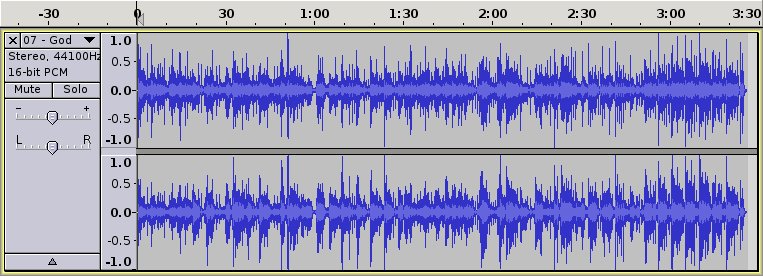
| HOME · MOVIES · HIKING · PHOTOS | SITE MAP | ||
A couple of years ago I was looking forward to the first Who record in waaaay too many years. When Endless Wire was released I was eager to hear where the band was at musically. On first listening I thought the new record was all right; it didn't sound like earlier Who records but that's to be expected since each Who record sounds different anyway, reflecting growth by the band and possibly an ear to musical trends as well. Soon I realized that I didn't like listening to any of the loud songs; there was good stuff there but I just didn't like listening to them. My attention was instead drawn to the quieter songs like God Speaks of Marty Robbins and Tea & Theatre. I wondered about this because I have no aversion to loud Who songs from other records.
Somewhere I read about the Loudness War and again thought about the loud songs on this record; I used Audacity to take a closer look at the music and was decidedly NOT happy with what I found. This CD (Universal Republic B000784502) is a casualty of the Loudness War!
So what's that? Google for "loudness war" and you'll get plenty of hits explaining it better than I can, but to summarize: It's been noticed that people will say that the louder of two songs sounds better, so record company marketing people want each new release to sound louder than the competition's. This isn't too much of a problem until the volume of the record hits the maximum volume allowed by the medium, in this case the CD. One can't get louder than that, so to make the music sound louder it must be compressed, which fills that quiet space between loud peaks by amplifying the music between the peaks, resulting in the peak volume staying the same but the average volume being increased. It's that average volume the listener perceives as loudness.
Compression in mastering has been used for decades but the advent of digital technology allows for really intense compression and manipulation of the peaks in an attempt to to avoid the harsh sound of clipping (not always succesfully) when trying to get as much of the audio as close to maximum volume as possible. Of course, this does not leave the music unscarred.
The end result of this War is that the recording industry has effectively frittered away the dramatic quality improvement expected of the change from analogue to digital media. A cynic would argue that this is what the recording industry wants; bad-sounding music so that the public will buy it yet again when it's inevitably re-released.
A quiet acoustic song like God Speaks of Marty Robbins sounds good and has a mostly-good looking waveform. There are only a few peaks that clip or are positioned at maximum volume, the vast majority look and sound like they should.

Looking at a song like Mike Post Theme one begins to see problems with large parts of the song where the audio has been squashed to the maximum CD-level.
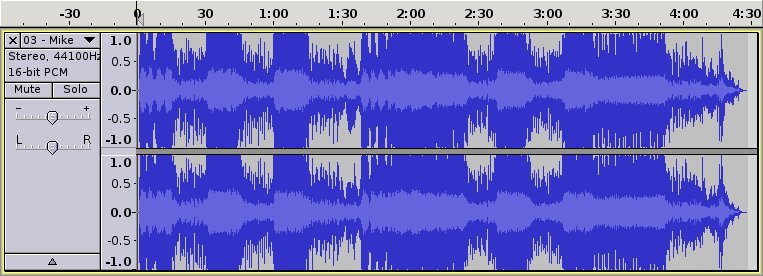
And then there's a travesty like Mirror Door, a loud song that should be a good Who song reminiscent of the Who are You record, but it's a mess. Most of the song has been crushed to maximum volume.
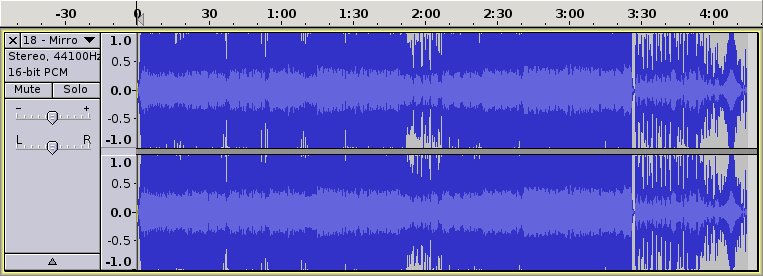
Let's take a closer look at some clipping in Mirror Door. There are at least two instances of clipping at 03:18 in each channel. The longest runs for a whopping 29 samples.
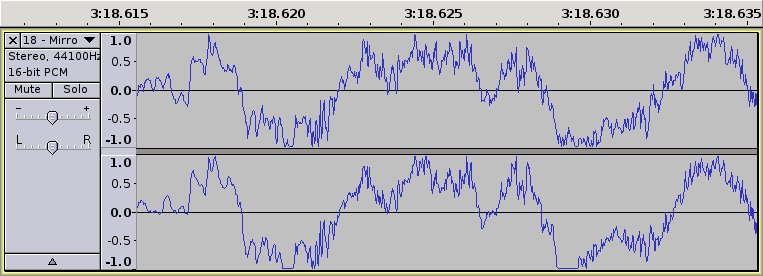
The songs were mixed by Pete Townshend. He was probably listening to digital masters and I can't help but wonder how their sound compares to this CD. I also wonder what he thinks of his efforts given the mangling that the final CD mastering did to the audio.
Going back to a much more innocent time let's take a look at Cry if You Want from the 1989 MCA reissue of It's Hard, a CD I acquired specifically because it has the original mix that I remember so well from 1982, warts and all. This song is the loudest sounding song on the record thanks to the compression used during recording, but during mastering for CD the peaks weren't damaged or forced to the same maximum level by abuse of digital technology to make it sound as loud as possible. It's the loudest sounding song on the record, and there's still at least 6 dB of headroom before a peak would clip. Beautiful!
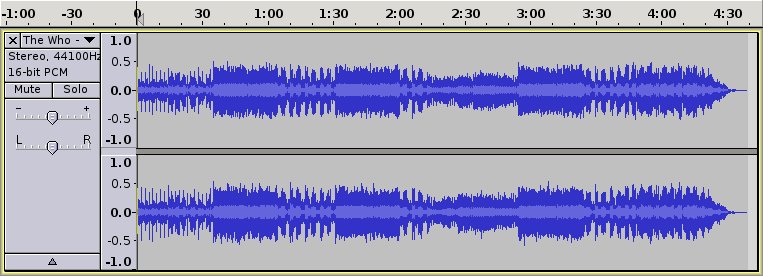
Let's not forget to take a look at Eminence Front, the most popular song from this record. It's a song that mostly maintains its average volume after the introduction, but peaks are allowed free range. They're not being eaten by compression nor hitting the maximum digital level. In other words, this is how all CDs should be mastered.
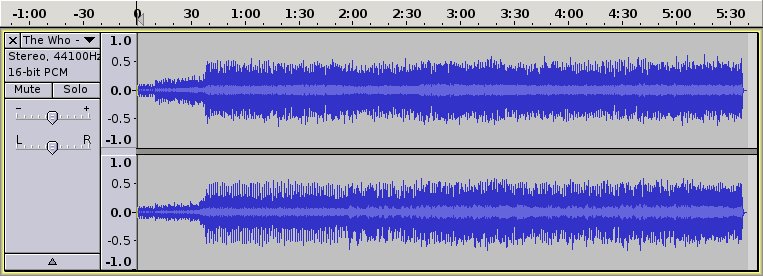
The recording industry is wondering why CD sales are dropping. I can say that my experience with Endless Wire means that I won't be blind-buying any CDs any more. I'll want to see and hear all tracks before I buy a disc. Yes, I deliberately wrote see because, as one can tell by looking at the above waveforms, it's the quickest way to find out if the music has been damaged by excessively loud mastering.
| Copyright © 1996-2010 Toomas Losin | Contact | Disclaimer | ||